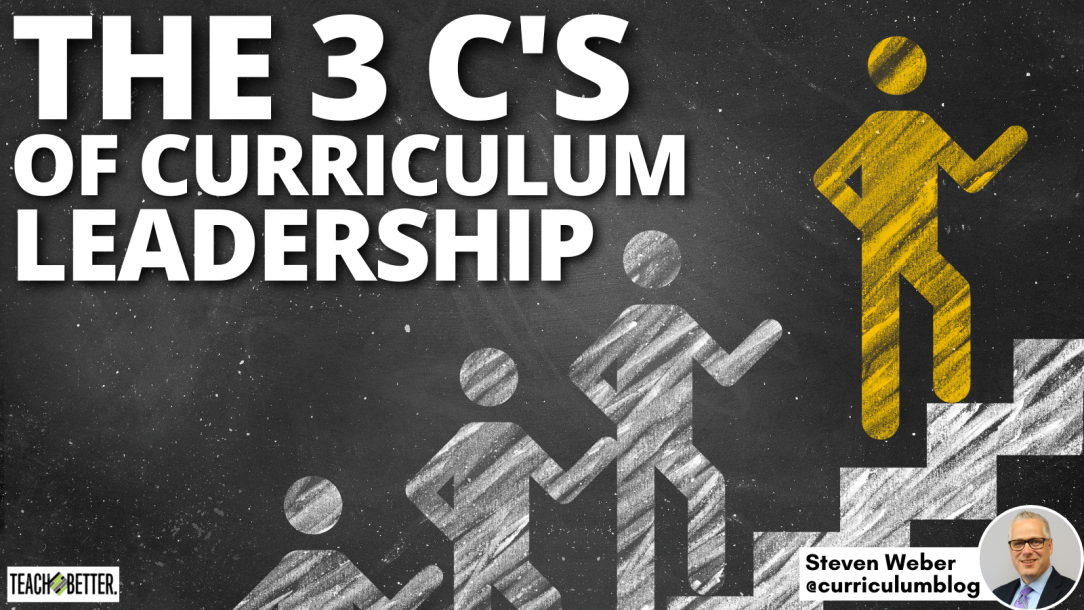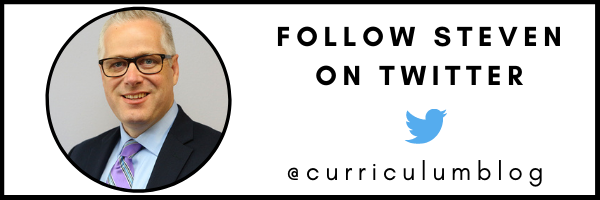TL;DR:
- Our world is changing and we need to stay relevant.
- Curriculum leaders help us narrow our focus.
- School leaders should be able to curate resources to help with various situations.
- Allow student choice.
- Make sure to have common formative assessments.
Our Changing World
The world is changing and the rapid pace of change is impacting teaching and learning. A traditional lesson or unit may no longer be relevant. The needs of the workforce are changing and schools must adapt. This means that curriculum leadership teams will need to reflect on the existing curriculum, learning targets, and assessments. “If we want a bright future for our children, we need to recalibrate our priorities. At the speed the world is changing, the old playbooks for living and working will inevitably be supplanted – and we need to prepare our children to author the new ones” (Brandt & Eagleman, 2017).
Curriculum Leaders
Curriculum leaders are needed in every school. In 2021, approximately 49.5 million students were enrolled in public schools (National Center for Education Statistics, 2021). Millions of students and families are depending on educators to prepare their children for success in this grade level and beyond. The role of the curriculum is to guide instructional decisions, support student understanding, and empower students with the opportunity to learn. Curriculum leaders participate in conversations about the ‘what’, ‘why’, and ‘how.’ The first question that must be addressed is “What should every student know and be able to do?” The ‘why’ question is related to “Why are these skills and understandings relevant and worth understanding?” Finally, “How will we determine if students can transfer their understanding?”
Preparing for the Future
“The goal of transfer requires that an instructional plan help the student to become increasingly autonomous, and the assessments need to determine the degree of student autonomy in addition to the effectiveness of content use in context” (Wiggins & McTighe, 2012). In an increasingly VUCA (volatile, uncertain, complex, and ambiguous) world, educators will have more questions than answers. The world is less predictable. Therefore, the role of determining the curriculum that is aligned with the skills that will prepare each learner to succeed beyond high school is becoming increasingly complex. “Too many people will be left out of the future of work. They lack [the] opportunity to develop the critical academic, technical, or cross-cutting skills that allow them to participate in this evolving workforce” (Jimenez, 2020). The 3 Cs of Curriculum Leadership will support educators who are seeking to prepare students for life.
Curation
The first C of curriculum leadership is curation. Teachers and administrators have the ability to curate resources within a school, across schools in a district, and literally with educators and other organizations around the world. Libraries, museums, state parks, professional organizations, and open source curricula provide multiple opportunities for content curation. “Curating implies more than just collecting resources or artifacts. It requires organizing and articulating the importance of the information” (Rosenthal Tolisano & Hale, 2018).
Curation is an essential skill for curriculum leaders to develop. The late Sylvia Rosenthal Tolisano (2019) wrote, “I will continue to speak of it, of that URGENCY in giving educational curation the priority in upgrading curriculum content and teaching practice it deserves, even though it is still a challenge to many to even wrap their mind around the topic.”
Teachers and administrators have the ability to curate resources within a school, across schools in a district, and literally with educators and other organizations around the world. Click To TweetQuestions for Curriculum Leadership Teams:
- Who are we curating with?
- Where do we store the best tools, resources, and videos related to each unit of study?
- How can curated resources upgrade our existing units of study?
Choice
Secondly, all learners benefit from choice. Enter a preschool classroom and you will observe learning centers, creativity, unstructured learning, laughter, communication, collaboration, and inquiry learning. As students move from the early grades into middle school, the curriculum is often more scripted. The school takes on an assembly line approach. Professor Ellwood P. Cubberley, of Stanford University, said in the early 20th century: “Our schools are, in a sense, factories, in which the raw products (children) are to be shaped and fashioned into products to meet the various demands of life. The specifications for manufacturing come from the demands of twentieth-century civilization, and it is the business of the school to build its pupils according to the specifications laid down” (as cited by Cuban, 2014).
5 Ways Curriculum Leaders Can Provide More Choice:
- Let students determine the book they will read.
- Offer options for how students will demonstrate their understanding.
- Provide students with the option to work with 1-2 partners or complete the assignment individually.
- Classroom learning space allows students multiple options, including a traditional desk, couch, beach chair, or writing on the table.
- Most importantly, students should have a choice in the curriculum. Curation is a strategy for curriculum leaders, but students should also become adept at curation and pursuing their own research questions.
Common Formative Assessments
Finally, assessment is a term that gets a bad rap. Teachers have become leery of high-stakes assessments and curriculum reductionism—when school districts determine that the tested subject areas should receive the most attention and number of minutes, at the expense of other content and priorities. “If five teachers teaching the same course or grade level are responsible for ensuring all students acquire the same knowledge and skills, it makes sense that those teachers would work together to determine the best methods to assess student learning” (DuFour, DuFour, & Eaker, 2007).
3 Strategies for Implementing Common Formative Assessments:
- Determine the priorities in each unit of study.
- Align the rigor of the assessment with the state standards and learning targets.
- Plan. Do. Study. Act.
Plan: how you will assess student understanding. Do: Implement the assessment with all classes. Study: the results. Act: Develop academic intervention and acceleration plans, based on the results.
Conclusion
Grier (2022) wrote, “Do you spend your time as a fire marshal or a firefighter?” It is easy for teachers and administrators to plow through the standards, teach the curriculum, and cover the key skills. There are disruptions throughout the school year such as fire drills, student assemblies, snow days, early release days, spirit week, and students who miss school. We can focus on fighting the fires and fanning the flames of the pacing guide or we can become a fire marshal who leads using the skills designed to be a proactive curriculum leader. Curation, Choice, and Common Formative Assessments are the future of curriculum leadership and the future is now.
References
Brandt, A. and Eagleman, D. (2017). The runaway species: How human creativity remakes the world. Catapult.
Cuban, L. (2014, May 8). Schools as factories: Metaphors that stick. Retrieved from https://larrycuban.wordpress.com/2014/05/08/schools-as-factories-metaphors-that-stick/#:~:text=Cubberley%2C%20of%20Stanford%20University%20said,the%20various%20demands%20of%20life
DuFour, R., DuFour, R., & Eaker, R. (2007, September 13). The case for common formative assessments. https://www.allthingsplc.info/blog/view/17/the-case-for-common-formative-assessments.
Grier, T. [@tgrierhisd]. (2022, September 4). Twitter. https://twitter.com/tgrierhisd/status/1566405750704021507?s=20&t=O_S_ZA0rlUFzFNbivxzMrQ.
Jimenez, L. (2020). Preparing American students for the workforce of the future: Ensuring every student’s readiness for college, career, and civic life. Retrieved from https://www.americanprogress.org/article/preparing-american-students-workforce-future/.
National Center for Education Statistics (2021). Fast facts: Back to school statistics. Retrieved from https://nces.ed.gov/fastfacts/display.asp?id=372#:~:text=Preliminary%20data%20for%20fall%202021,students%20(source%2C%20source).
Rosenthal Tolisano, S. (2019, May 19). Curation as an educational challenge. Retrieved from http://langwitches.org/blog/2019/05/19/curation-as-an-educational-challenge/.
Rosenthal Tolisano, S., & Hale, J. (2018). A guide to documenting learning: Making thinking visible, meaningful, shareable, and amplified. Corwin.
Wiggins, G., & McTighe, J. (2012). What are transfer goals? Retrieved from https://grantwiggins.files.wordpress.com/2012/02/transfer-goals-clarification-feb-2012.docx.
About Steven Weber
Dr. Steven Weber is the Associate Superintendent for Teaching and Learning with Fayetteville Public Schools (AR). His areas of research include curriculum design, formative assessment, professional learning, and school leadership.




